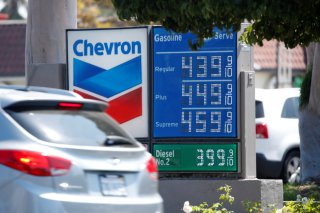Not All Americans Feel the Same Amount of Pain at the Pump
However, there might be some much-needed relief on the way after weeks of elevated gas prices.
The average American car driver is spending 2.24 percent of their monthly income on gas, while the average pickup truck or SUV driver is losing out on 3.12 percent of their income, according to a report released by FinanceBuzz.
The report—based on data from the U.S. Department of Transportation, U.S. Census Bureau, and AAA—also shed light on the varying amount of financial pain people are enduring in different states.
South Hit Hard
Six of the ten states where residents spend the highest percentage of their monthly income on gas are in the South, with Alabama residents paying the most and Wyoming residents following closely behind.
“For example, in Alabama, where residents drive more than 1,000 miles a month on average but earn less than residents in most other states, drivers are spending more than 5 percent of their take-home pay on fuel—the highest percentage in the country,” CNBC writes.
Meanwhile, drivers in Washington, D.C., New York, and Alaska pay the lowest percentage of their monthly income on gas. For example, residents of Washington, D.C., only spend 0.73 percent of their monthly income on gas.
Gas Relief on the Way?
After weeks of elevated gas prices across the country, there might be some much-needed relief on the way, according to Patrick De Haan, head of petroleum analysis at GasBuddy.
For a third consecutive week, the nation’s average gas price has slowly declined. The national average now sits at $4.10 per gallon, about nine cents lower than a week ago and twenty-four cents less than a month ago. The current price, however, is still $1.26 per gallon higher than what was seen last year.
According to Fox Business, “oil prices have fallen back on expectations of weaker demand after peaking above $130 per barrel last month due to anxiety about the disruption of supplies from Russia, the world's No. 2 exporter.”
In an interview on Monday, De Haan acknowledged that the fall in oil prices is starting to have a “profound impact” on gas prices.
“Americans [are] now collectively saving about $100 million every day fueling up in light of the lower prices, and the good news is with oil prices down today significantly, I think we will see a fourth straight week of declines across the country,” he told host Neil Cavuto.
De Haan also contended that the surge in coronavirus cases in China and the government’s response have contributed to “a tremendous amount of demand destruction happening in China.”
He added that he believes that “gas prices may have peaked for the year ahead,” but another surge could be on the horizon “if there is unrest or escalations between Russia and Ukraine.”
Ethen Kim Lieser is a Washington state-based Finance and Tech Editor who has held posts at Google, The Korea Herald, Lincoln Journal Star, AsianWeek, and Arirang TV. Follow or contact him on LinkedIn.
Image: Reuters.

